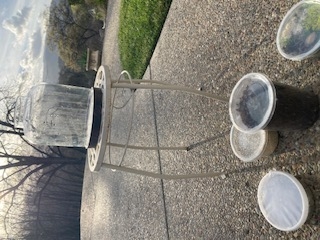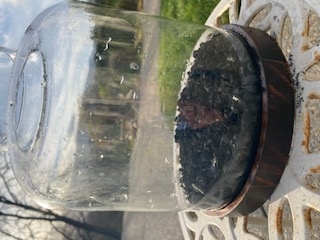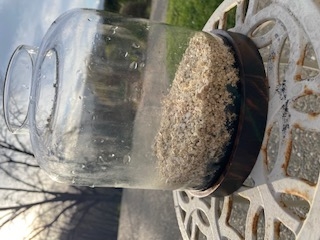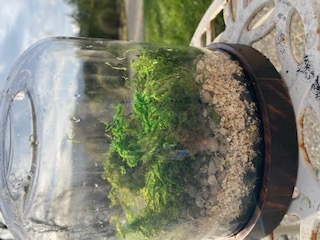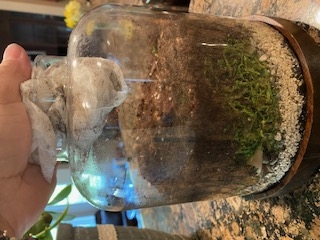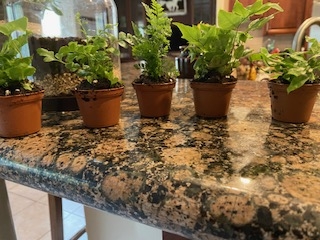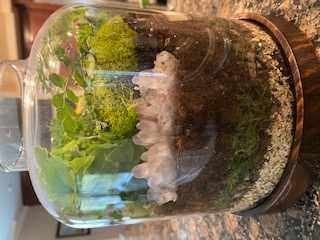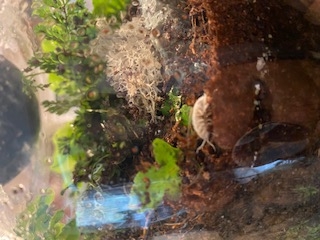UC Blogs
My “closed” Terrarium Adventure
A few months ago, I decided to try out an idea I've had for a while, creating a “closed” terrarium. I say closed with quotations because over the six weeks I've been working on it I've opened it it 4 or 5 times to add or take away items and finesse the correct amount of water needed to create the perfect balance. It has now been closed for a month and it is actively growing and thriving! Here are the steps I followed to create this fun little habitat.
1. I ordered a terrarium kitonline for my first try at this, (I know, I know) but from now on I'll buy each portion individually as it is less costly and allows for more personalization.
2. The lowest/first layer is horticultural charcoal. This helps prevent mold and mildew.
3. The next layer is a drainage layer of gravel.
4. The next layer is a layer of larger gravel. The different layers help facilitate the water cycle and add visual appeal to the terrarium.
5. Next, I layered moss for moisture retention.
6. The next layer is a mixture of potting soil and native soil from outside. The reason for adding the outside soil is I plan on adding isopods (roliepolies) to my finished terrarium and they rely on organic matter to survive until the natural plant cycles take over.
7. After I added all the ground layers a good wipe down inside the glass was needed to beautify and add visibility to the terrarium.
8. Time for plants! I ordered a terrarium kit online that came with plants, but the plants weren't labeled! Grrr! But any plant that thrives in a warm, moist environment should work. The fern in particular is thriving.
9. Some crystals, bark, stones, decorative moss or small statuary will add to the beauty of the build. Any slowly rotting sticks or wood will also help keep the isopods eating well.
10. Water….vitally important. Water should be added with a spray bottle to the soil and plants. A few tweaks might be necessary to keep the right balance, it seems like a “feel” thing so I have no guidance about how much to add, everything should moist but not sopping.
11. Now it's time for optional “pets” Theisopod market is thriving. I joined anisopodFacebook group and they advised me to pick up a few. I purchased 15 and most are still thriving in there after a month of being completely enclosed.
12. Lighting-Terrariums do require light. I bought a lamp with a timer to put my terrarium under, but any well lit window area should provide enough sunshine.
13. The top. When you're finished setting up all the parts and you're ready to display don't forget to securely close the top so as to not let the isopods escape or water dissipate.
I am so happy I went out on a limb and tried this! This was my first venture into closed terrariums, but I'm sure it won't be my last!
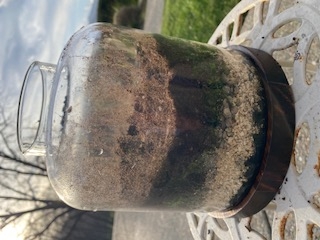
IMG 7706
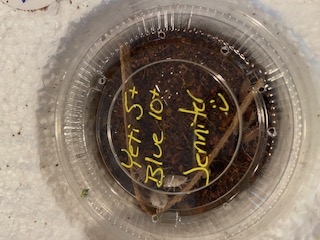
IMG 7852
Ready for a Saturday Night of Bioblitz at the UC Davis Arboretum?
Like to participate in an evening City Nature Challenge Bioblitz on the UC Davis campus and search for insects? And document other fauna...
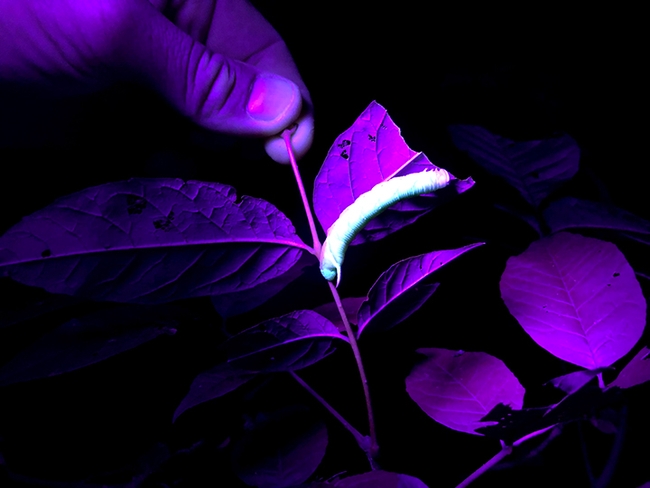
A waved sphinx (Ceratomia undulosa) caterpillar glows under ultraviolet light. (Photo by Grace Horne)
Revisiting the Issue of Monarch Butterflies Missing from California Classrooms
A monarch butterfly caterpillar goes through five stages or instars before it J's and becomes a jade-green chrysalis. Scientists estimate...
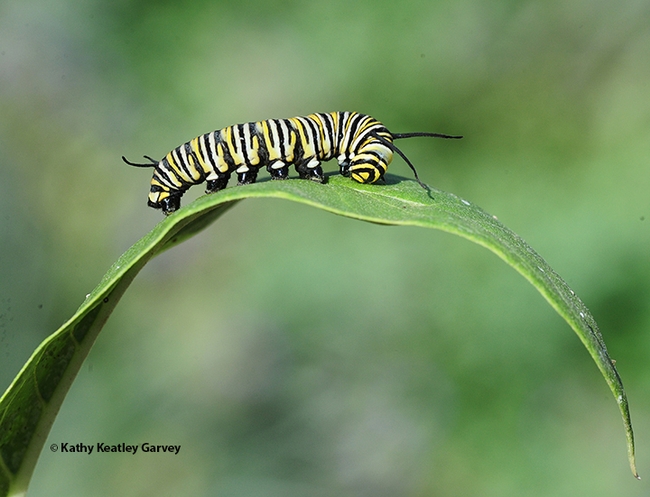
A monarch caterpillar crawling on a milkweed leaf. (Photo by Kathy Keatley Garvey)
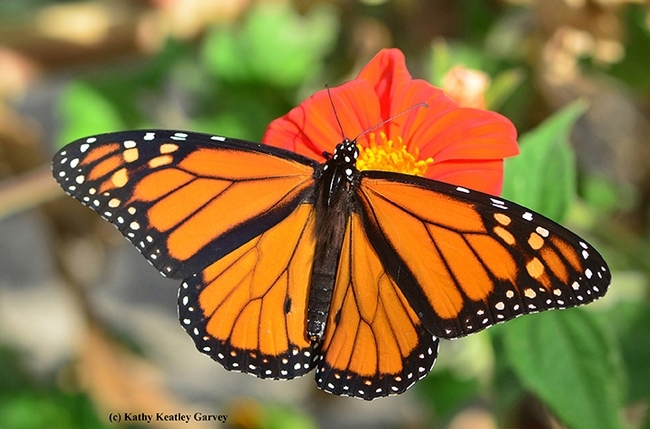
A male monarch butterfly foraging on a Mexican sunflower (Tithonia rotundifola) in a Vacaville pollinator garden. (Photo by Kathy Keatle Garvey)
Spring Miku
Spring blossoms full of color
Super blooms beginning their show
Spring fever, allergies and plant rebirth
'Dr. Zac' to Present UC Davis Seminar on Honey Bee Research, Life Experiences
"A lot of students take a gap year between their undergrad and grad program," says honey bee scientist Zac Lamas, a National Institute of...

Honey bee scientist Zac Lamas, a National Institute of Food and Agriculture (NIFA) postdoctoral fellow with the USDA's Agricultural Research Services.


